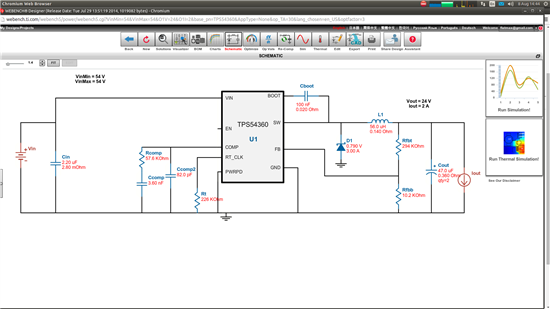Hi there,
Previously I was using a TPS5430 to turn a 24V into a -24V. It was working rather nicely.
Unfortunately, I have found that the input power can be as high as 30V now ... thats +6V on the input. When this happens, the TPS5430 sparks and lets its smoke out.
I am thinking of trying the LM22676 instead of the TPS5430 because it can handle 6V more on the input. It also has the same footprint and circuit. I have a new design which simply requires replacing the bias resistor divider with ones which suit the LM22676.
Does anyone see any problems with this approach ?
thanks
Matt



